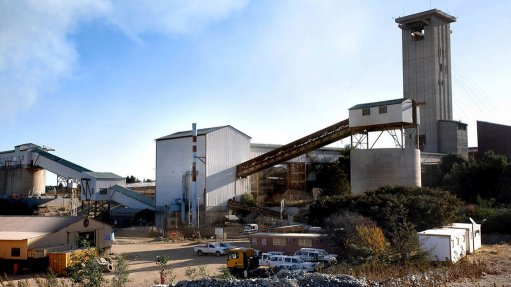
Name: Kloof mine.
Location: Kloof is situated an estimated 70 km west of Johannesburg, near Westonaria, in South Africa’s Gauteng province.
Controlling Company: Sibanye Gold.
Brief History: The Kloof mine was established through the amalgamation of the Venterspost, Libanon, Leeudoorn and Kloof gold mines in 2000. Kloof successfully converted its old-order mining right to a new-order mining right in 2007. The mining right is valid to January 29, 2027, and covers 20 087 ha. In 2010, the Kloof and Driefontein mines combined to create the Kloof/Driefontein Complex. In 2012, the unbundling of Sibanye from Gold Fields was announced.
Brief Description: Kloof is a well-established intermediate to ultradeep-level gold mine, with operating depths of between 1 300 m and 3 500 m below surface.
Geology/Mineralisation: Kloof is located on the West Wits Line, which forms the Far West Rand of the Witwatersrand basin. The bulk of production at Kloof is from the Ventersdorp contact reef (VCR), which occurs at depths of between 1 300 m and 3 350 m below surface. The Middelvlei reef is classified as Kloof’s secondary reef, and further minor production volumes are delivered from the Kloof reef and the Libanon reef.
Kloof lies between the Bank fault to the west, and the north- trending West Rand fault to the east. The latter truncates the VCR along the eastern boundary of the mine, with a 1 km to 1.5 km upthrow to the east.
Normal faults are developed subparallel to the west-dipping West Rand fault, with sympathetic north- to north-east-trending dykes that show little or no apparent offset of the stratigraphy. A conjugate set of faults and dykes occurs on a west to south-west trend, with throws of 1 m to 50 m. Structures that offset the VCR increase in frequency towards the southern portion of the mine as the Bank fault is approached.
Reserves: Total mineral reserves as at December 31, 2013, were estimated at 334.7-million tons grading 0.54 g/t.
Resources: Total mineral resources as at December 31, 2013, were estimated at 333.3-million tons grading 3.07 g/t.
Products: Gold.
Mining Method: Kloof is principally an underground mine, with nominal surface reserves represented by surface rock dumps and tailings accumulated during the operating history of the mine.
Major Infrastructure and Equipment: Kloof has multiple operating shaft systems and three metallurgical plants. The KP2 plant processes underground ore from all the Kloof shafts, with the KP1 and the Python plants processing low-grade ore from surface rock dump sources.
Prospects: A prefeasibility study (PFS) on the viability of developing the Kloof 4 shaft below-infrastructure project resources was completed in 2014.
The PFS suggests robust economic returns that exceed the company’s internal investment hurdle rates. The project has consequently been included in group gold reserves in 2015 and in the life-of-mine production plan. The below-infrastructure project adds an estimated 500 000 oz of gold to Kloof’s mineral reserves.
Additional detailed feasibility studies are scheduled for completion in the second quarter of 2015.
Contact Person: Sibanye Gold head of corporate affairs James Wellstead.
Contact Details:
Sibanye Gold,
tel +27 11 278 9600,
fax +27 11 278 9863,
email james.wellsted@sibanyegold.co.za, and
website http://www.sibanyegold.co.za.